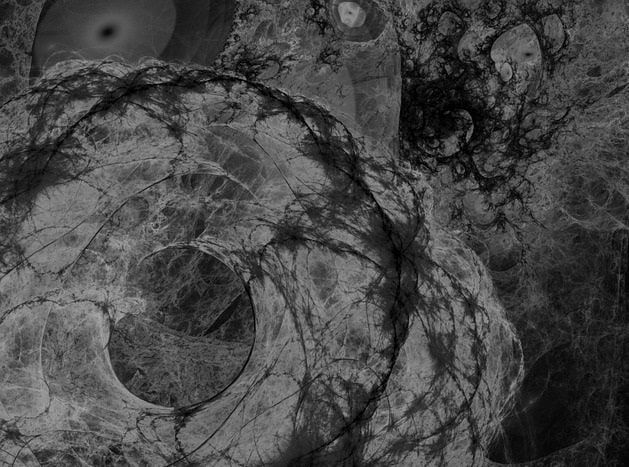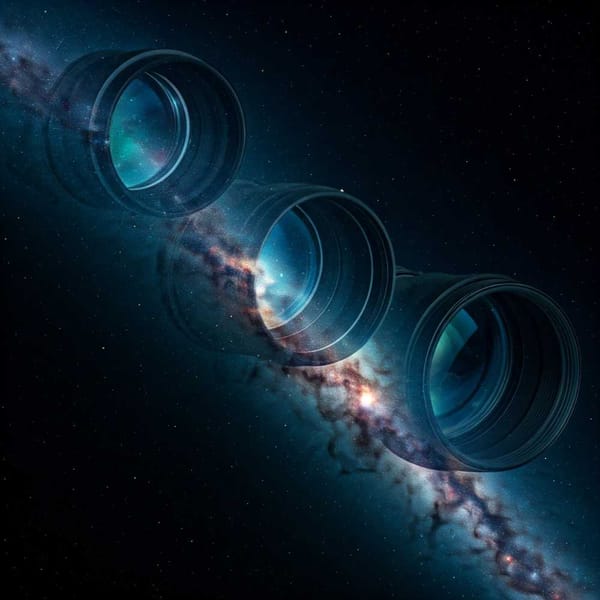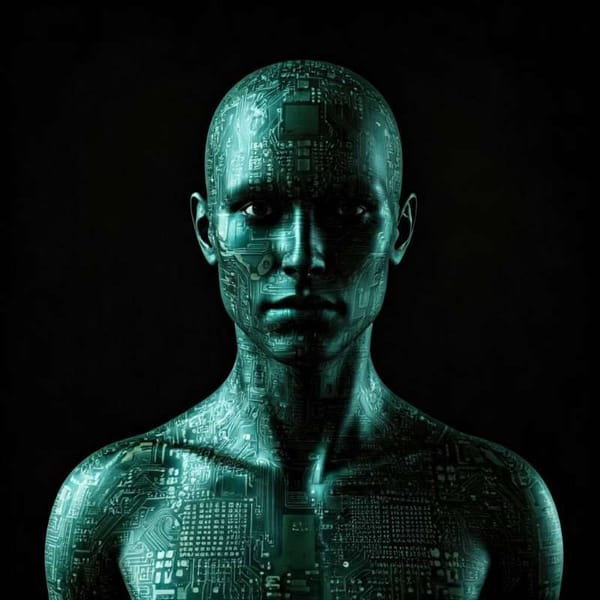Towards the theory of everything: discovering what the universe is made of
Today we must find a theory that includes all forces and all particles, known as the Theory of Everything to understand what the universe is made of.

One of the most important scientific discoveries throughout the history of mankind is the fact that ordinary matter is made up of atoms. This discovery was initially suggested about 2,400 years ago by the ancient Greeks, in particular by the philosopher Democritus, but its experimental confirmation, rigorous and adhering to the scientific method, was not completed until 1905 when Albert Einstein published a paper in which he correctly interpreted the Brownian motion. This motion is named after the English botanist Robert Brown, who observed in 1827 that pollen grains suspended in water exhibit a random motion, visible through a small microscope. Einstein's interpretation explains this motion as a consequence of the random collision of water molecules with pollen grains.
In the previous paragraph, we said that ordinary matter is made up of atoms. To our surprise, in the Universe, there is another type of matter very different from ordinary matter, called dark matter. Thanks to several astrophysical observations that have been made in the last 40 years, we know that dark matter is 6 times more abundant than ordinary matter, however, we still do not know what it is made of. It is called dark matter because, unlike ordinary matter, it does not emit light and only interacts through two types of force, the so-called weak force, and the gravitational force. So far dark matter has been detected only through its gravitational effects on very large scales in galaxies and clusters of galaxies. However, at the moment there are a large number of scientists working to try to understand what this enigmatic dark matter is made up of and how it interacts through the weak force.
There is also another component of the Universe that is even more massive and mysterious than dark matter and about which we know even less. This component is called dark energy; it is estimated to be 18 times more abundant than ordinary matter and its effect causes our Universe to expand at an accelerated rate. Although the scientific community was sure that the expansion of the Universe should slow down with time, the accelerated expansion of the Universe was discovered by two groups of scientists only in 1998 and it turned out to be a surprise. In fact, the 2011 Nobel Prize in Physics was awarded to the scientific directors of these groups.
Unlike the ancient Greeks who disdained experiments, we now know that understanding how the Universe works require carefully planned experiments. The importance of experiments is vital because they allow us to test all aspects of the theories we gradually develop until these theories provide us with reliable and lasting answers about Nature. This is the essence of the scientific method, using it as a guide we have embarked on an endless adventure through the intricate wilderness of Nature's knowledge and have been able, little by little, to apply that knowledge for the benefit of mankind, although it would also be fair to say that on rare occasions, as in the case of the atomic bomb, that same knowledge has been used to cause death and destruction.
To illustrate the importance of experiments, let us describe how the structure of atoms was understood. The physicist Ernest Rutherford conducted a series of experiments in 1911 in which he launched positively charged subatomic projectiles, called alpha particles, at a very thin sheet of gold. Rutherford and two of his students expected all the projectiles to pass through the gold foil, however, to their surprise they found that on rare occasions the projectiles bounced back. According to their interpretation, this is because atoms have almost all their mass concentrated in their center, called the nucleus. The nucleus is also positively charged, so positive projectiles bounce back when they hit the nucleus head-on because electric charges of the same sign repel each other. The observed fact that only a very small fraction of the projectiles bounce back means that the size of the nucleus is very small compared to the size of the atom.
Apart from the nuclei, atoms consist of other particles called electrons that surround the nuclei and have a negative charge. Electrons were discovered in 1897 through the work of physicist Joseph John Thomson with an apparatus called a cathode ray tube, similar to the kinescopes of old-fashioned televisions. Atoms are normally neutral because the number of protons in the nucleus is equal to the number of electrons surrounding the nucleus. In the 1930s it was discovered that the nuclei of atoms are made up of neutrons and protons. Protons are positively charged particles and neutrons are particles that have about the same mass as protons but are neutral. It is almost like a miniature solar system, except that the motion of these subatomic particles is governed by laws of physics that are very different from Newton's classical laws. These new laws were gradually discovered during the first half of the 20th century, giving rise to what we know today as Quantum Mechanics. Incidentally, Albert Einstein made a crucial contribution to the development of this theory, which in most cases contradicts what we would expect with our common sense. So unusual are the concepts of quantum mechanics that Einstein himself spent many of his last years trying, unsuccessfully, to find a less enigmatic alternative theory. However, today we have many high-tech devices such as lasers, computers, cell phones, televisions, X-ray equipment, diagnostic devices and cures for many diseases, etc., because of the knowledge we have of the microscopic world thanks to quantum mechanics.

The size of atoms is very small, for example, for an atom of hydrogen, the lightest and most abundant element, to look one centimeter in diameter we would have to amplify it a hundred million times. In other words, it would take a hundred million hydrogen atoms placed in a row to complete a one-centimeter line. The size of the nuclei is much smaller, about 100 thousand times smaller. If we were to imagine the nucleus of a hydrogen atom, which is simply a proton, to be the size of one of the dots in this text, about half a millimeter in diameter, then the size of such an amplified hydrogen atom would be about 50 meters in diameter. Although we have not yet measured the size of electrons, we know that they are at least a hundred times smaller than protons, but as our measuring devices become more sensitive we may find that they are actually much smaller. The size of atoms does not vary much, for example, the size of a uranium atom, one of the heaviest naturally occurring elements and 238 times heavier than a hydrogen atom, is only about 4 times the size of a hydrogen atom. We can therefore say that atoms and molecules are composed of almost pure empty space.
Fortunately, we are living in a very interesting moment, just now and worldwide, several experiments are being carried out that will allow us to advance in the knowledge of what are and how elementary particles behave. For example, thousands of scientists from dozens of countries, including scientists from Mexico, are working at the European laboratory called CERN. This laboratory is currently conducting an experiment similar to the one Rutherford did 100 years ago, but using projectiles with billions of times higher energies.
This experiment consists of accelerating protons to almost the speed of light in a 27 km circumference ring inside the Large Hadron Collider (LHC). The purpose of this experiment is to collide protons traveling in one direction of the ring with protons traveling in the opposite direction. As a result of these collisions, we will be able to recreate some of the conditions that existed during the first fractions of a second after the Universe was created.
Although the LHC was announced by some media when it began operations in 2008 as the scientific experiment that would end the Earth, there is no doubt that it is completely safe. The media reported that such energetic collisions between protons would produce black holes, which, although microscopic, would gradually absorb all the matter around them until they wiped out our planet. What the media did not say is that in the Earth's atmosphere there are constant collisions between ultra-energetic protons, which reach the Earth with energies 100 million times higher than the LHC protons, and the protons and neutrons in the nuclei of the atome. These collisions occur with effective energies that are tens of times higher than the energies resulting from collisions between protons at the LHC. These protons arriving at Earth, called ultra-energetic cosmic rays, are accelerated out of our Galaxy by some cosmic-scale accelerator mechanism that we are just beginning to understand.
It is easy to realize that if the LHC collisions were dangerous, as the media announced, collisions of ultra-energetic cosmic rays with the Earth would have disappeared long ago. But fortunately, nothing like that happens and here we are, trying to do the most complex experiment ever attempted. The truth is that we do not know whether or not microscopic black holes are formed as a consequence of collisions between protons at high energies, what is certain is that in case they were formed, these black holes would evaporate immediately, without causing damage, through a radiation mechanism postulated by the famous English scientist Stephen Hawking.
It turns out that the research of the last 114 years since the electron was discovered in 1897, can be summarized in a theory called "The Standard Model". This theory is the most successful theory we have for understanding what elementary particles are and how they behave. The Standard Model allows us to understand three of the four fundamental forces that exist. These forces are the electromagnetic force, the weak force, and the strong force. The fourth force is the gravitational force, which, despite the advances made by scientists such as Isaac Newton and Albert Einstein, is extremely difficult to understand when it acts at microscopic scales and we do not yet have a satisfactory model of its behavior.
Of all the particles included in the Standard Model, only one remains to be discovered, in fact, the missing one is the most important because it will allow us to understand how the other particles acquire mass. This particle is called Higgs in honor of the scientist Peter Higgs. In November 2011 there is evidence from the LHC's CMS and ATLAS groups that the Higgs does not have the mass predicted by the Standard Model. If the LHC does not find the Higgs, a major modification of the Standard Model will be required. The other particles of the Standard Model are of two types: leptons and quarks on the one hand and interacting intermediate particles on the other. Of the first type, quarks and leptons, the best-known particle is the electron, while of the second, intermediate particles, the best known particle is the particle of light, also called a photon. In this scheme, we know that protons and neutrons are made of light quarks.
On the other hand, neutrinos are neutral particles but of small masses that are part of leptons. These neutrinos are currently causing a great stir in the scientific community, because a couple of months ago it was announced by an experimental group at CERN, called OPERA, that neutrinos travel faster than light itself, in contradiction with one of the postulates of Einstein's theory of relativity; this postulate states that nothing can travel faster than the speed of light in a vacuum. If this result is confirmed, it would cause a revolution in our current knowledge of physics. Regarding the latest advances, we have made, related to elementary particles, the reader may have learned that in 1995 the top quark was discovered in a laboratory called Fermilab located near Chicago. This particle is the heaviest of all the six types of quarks we have discovered so far. These quarks, like the Higgs particle, had already been predicted by the Standard Model.
Regarding the question of whether it is worth investing tens of billions of dollars in this type of research, we can comment that when the electromagnetic force began to be studied, barely 200 years ago, no one, not even the scientists who achieved the first results, such as Faraday and Maxwell, suspected the enormous number of applications that their research would have and that today make our lives much more comfortable. Scientific research is fascinating: not only does it provide us with knowledge that allows us to understand Nature better and better, but it is also an important axis for the integral development of countries. Imagine what our lifestyle would be like without all the benefits we have from scientific advances and their technological applications.
Although the Standard Model has been so successful in helping us understand how elementary particles behave, grouped in three families of quarks and leptons, we know that it is not perfect because it does not incorporate the gravitational force. Today we believe that we must find a theory that includes all forces and all particles. Such a theory is known as the Theory of Everything. This theory will allow us to understand what Dark Matter and Dark Energy are. The LHC also has the potential to discover the particles that make up the Dark Matter of the Universe. It turns out that the study of the smallest, the elementary particles, and the largest, the Universe, are intimately related!
As the reader can appreciate, the work of scientists never ends; when a question is answered, new data and new questions immediately arise, and so, step by step, with ever-increasing interest, we improve our knowledge of Nature.
Luis Manuel Villaseñor Cendejas has a PhD in Physics, did his doctoral work at the CERN Laboratory and currently works at the Institute of Physics and Mathematics of the Universidad Michoacana de San Nicolás de Hidalgo. Source: Saber mas




